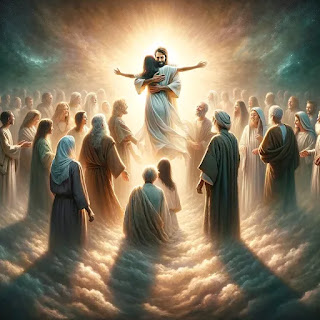Cyclical Hierarchies
Cyclical Hierarchies:
When most people think of hierarchies in nature, we often think of top down hierarchies and bottom up hierarchies. Naturally, these systems are unequal. Inequality in nature, however, is natural and inevitable, as with inequality in political systems and social institutions.
There are some people who have more intelligence and some that have less intelligence, some that are more attractive and some that are less attractive, Some with more resources and some with less resources, some that are stronger and some that are weaker. You get the point. Throughout the ages, we have debated what hierarchical system is the most efficient, yet still allowing for the most freedom in the society it operates in. The most common form, throughout history at least, is a top down approach.
An established authority that governs the system from a "top" position or status, and everything else is subservient to that authority. The age of enlightenment brought about a shift in the understanding of how hierarchies in social institutions should operate. Instead of absolute power given to an authority, many thinkers, including many of our founding fathers, thought that authority should be accountable to the governed, and systems like democracy and republicanism had a resurgence from their thousand year dormancy in western civilization.
Theory has it that the people of a country could elect the members of their governments and hold them accountable if they stray from the desired agenda of the electorate. It works rather well in most situations, but like most systems, flaws like human ignorance, error, and self-interest still degrade systems like this.
I wanted to talk about what is in essence a perfect hierarchy that accounts for the natural inequalities of the human condition. It is 3 point, or "rock paper scissors" hierarchy. It is a cyclical hierarchy in which there are three "powers" and they govern each other in a cycle, with one governing the next, and that one governing the next, and that one governing the first one.
This type of hierarchy accounts for the inequality, but their is no clear top of the hierarchy. Any power could be the top at a given moment. Now the difficulty is applying this type of hierarchy to a preeminently dichotomous, top down system of hierarchies that exist in our society. How to establish a third power with traits that give it a "rock-paper-scissors" type power structure within a social institution still has eluded me. I guess I will have to do more research!!
When most people think of hierarchies in nature, we often think of top down hierarchies and bottom up hierarchies. Naturally, these systems are unequal. Inequality in nature, however, is natural and inevitable, as with inequality in political systems and social institutions.
There are some people who have more intelligence and some that have less intelligence, some that are more attractive and some that are less attractive, Some with more resources and some with less resources, some that are stronger and some that are weaker. You get the point. Throughout the ages, we have debated what hierarchical system is the most efficient, yet still allowing for the most freedom in the society it operates in. The most common form, throughout history at least, is a top down approach.
An established authority that governs the system from a "top" position or status, and everything else is subservient to that authority. The age of enlightenment brought about a shift in the understanding of how hierarchies in social institutions should operate. Instead of absolute power given to an authority, many thinkers, including many of our founding fathers, thought that authority should be accountable to the governed, and systems like democracy and republicanism had a resurgence from their thousand year dormancy in western civilization.
Theory has it that the people of a country could elect the members of their governments and hold them accountable if they stray from the desired agenda of the electorate. It works rather well in most situations, but like most systems, flaws like human ignorance, error, and self-interest still degrade systems like this.
I wanted to talk about what is in essence a perfect hierarchy that accounts for the natural inequalities of the human condition. It is 3 point, or "rock paper scissors" hierarchy. It is a cyclical hierarchy in which there are three "powers" and they govern each other in a cycle, with one governing the next, and that one governing the next, and that one governing the first one.
This type of hierarchy accounts for the inequality, but their is no clear top of the hierarchy. Any power could be the top at a given moment. Now the difficulty is applying this type of hierarchy to a preeminently dichotomous, top down system of hierarchies that exist in our society. How to establish a third power with traits that give it a "rock-paper-scissors" type power structure within a social institution still has eluded me. I guess I will have to do more research!!



Comments
Post a Comment